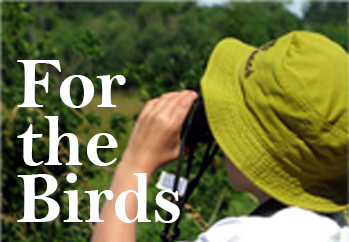Las Vegas and its Vicinity Awash in Birding Opportunities
Opinion Advocates for ideas and draws conclusions based on the author/producer’s interpretation of facts and data.
 By Brian Kluepfel
By Brian Kluepfel
Many images come to mind when the words Las Vegas are spoken, but likely not one of abundant riparian ecosystems within 30 minutes of the infamous strip.
Yet over the past three decades the Las Vegas Wash (lvwash.org) has become a fine example of conservation efforts in the valley, and among other recreational activities, offers an excellent birding site.
Thanks to the outreach of Red Rock Audubon and its president Zane Marshall, I was able to experience the incredible richness of this spot, smack-dab in the middle of the Mojave Desert (which receives, on average, four inches of rain per year). Rising at 5 o’clock on a fine Saturday morning, I stumbled through the 24-hour din of the New York New York casino and into the gentleness of the Grateful Dead filling Marshall’s Subaru, and we were off.
The Las Vegas Wash originated millennia ago from a water flow from Frenchman’s Mountain to the Colorado River, but had dried up by the early 20th century when Sin City was being developed in earnest.
Treated wastewater returned the wash to an active year-round flow in the 1950s, and a Comprehensive Adaptive Management Plan in 2000 attempted to mitigate flooding and slow, as well as filter, the 200 million gallons of water (reclaimed urban runoff and ground/stormwater), which run through the wash and provide sustenance for an incredible 900 wildlife species, including more than 300 avian species. The restored wetlands also act as a natural filter before this water reaches Lake Mead.
We first hit the Clark County Wetlands Park, and immediately spot great-tailed grackles and mourning doves, common species to the area. Jackrabbits hop through the native quail brush down a disappearing trailhead, also rich in purple-flowered oleander (beautiful but not native). We get a good look at a black phoebe singing atop the brush abutting the wash, and a yellow chat (“dominant force in the soundscape,” according to Marshall) calls vociferously from a treetop. A Bewick’s wren completes the aural snapshot, heartily singing, its head thrown back.
We spot a few Anna’s hummingbirds hovering, sometimes lucky enough to have the sun hit their gorgeous magenta gorgets. The crissal thrasher is a lifer for me, and we see a couple of these lean, white-mustached, curve-billed birds vigorously digging in the sand for, one presumes, a morning breakfast.
For another southwestern specialty, I see my first-ever verdin, a handsome yellow-headed, chestnut and grey songbird, and we’re treated to a couple of fine glimpses of the comma-crested Gambel’s quail, an attractive ground-nester whose cry is ever present during our walk.
The thrill of the morning, though, has to be the quartet of fledgling great-horned owls occupying a single tree, their downy feathers rather resembling the dander of the neighboring cottonwood trees. They were likely born in January, Marshall said. I wonder how many will survive to adulthood?
We spot a pair of elegant ospreys at a “weir” (water break) in the wash, a common gallinule, some American coots and a “park duck” (a serious crossbreed of several species, it would seem) before heading off down the road to the City of Henderson Bird Viewing Preserve. There were a series of manmade ponds, which were once part of the water conservation project but now remain as excellent birding spots, as any migratory waterfowl or other species in need of refreshment will likely see this oasis in the Mojave.
I mention that I’d like to see a yellow-headed blackbird, and moments later, serendipitously, one pops up; we could hardly ask for a better view of this lovely corvid. Walking along a paved trail lined with native purple-flowered arrow weed, I try to conjure up a roadrunner, but to no effect.
We’ve been told at the visitor’s center to head to Pond 7, so we don’t dally. On the way we do see several exceptional eared grebes, one female close enough to magnify its spellbinding red eyes. Pond 7 is indeed lucky today, and we see redhead ducks, black-necked stilts, long-billed dowitchers, Wilson’s and red-necked phalaropes and Western and spotted sandpipers.
A dapper sora rail completes the scenario, a veritable cornucopia of water birds, all rather easily seen from a handy viewing platform. Killdeer sound their flighty alarm, and I’m reminded it may be time to return to the sordid reality of the Strip.
It was a stellar Saturday with more than 40 species across the two sites, and a reminder that the American Desert can hold untold natural riches, if we only know where to look.
In a recent National Geographic article on geoglyphs, the author noted that many indigenous tribes consider rocks a living, breathing thing. Indeed, the Mojave Desert is alive, and I thank Red Rock Audubon and Zane Marshall for reminding me of that.
Brian Kluepfel is a member of Saw Mill River Audubon and a correspondent for the Lonely Planet travel series, Birdwatching magazine and many other publications. He lives and birds in Ossining.

Examiner Media – Keeping you informed with professionally-reported local news, features, and sports coverage.
